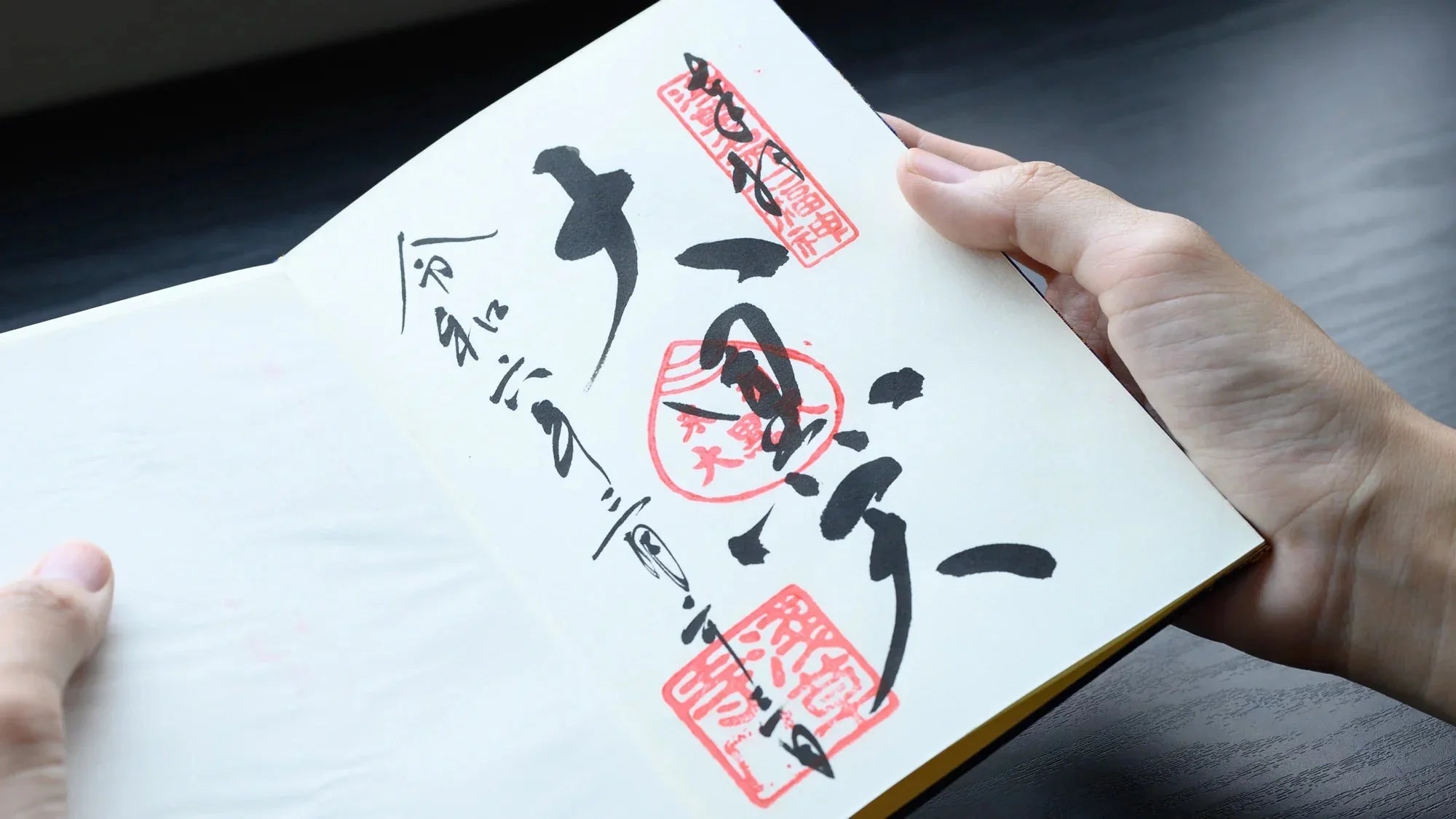
Making a Mark: What Are Goshuin?
Written by Team MUSUBI
The above image is for illustrative purposes only.
Goshuin are the official stamps or seals of Japanese places of worship, each with their own unique design, and are proof of your worship at that specific site.
The stamp is usually accompanied by the site's name and the date, all handwritten in Japanese calligraphy. The calligraphy, in traditional black ink, contrasts with the red seal (the literal translation of goshuin). Some sites offer variations according to the seasons or cultural events such as the New Year.
Table of Contents
Short History of Goshuin
By the Edo period (1603 CE–1868 CE), commoners traveled freely and visited numerous sacred sites. It is believed that during this time, seals were provided even for those who only worshipped without offering written scriptures.
After the Meiji period (1868 CE–1912 CE), advancements in public transportation made going to temples and shrines much more convenient, and collecting seals became popular. Guidebooks and travelogs were published, and the term "goshuin" is believed to have come into use around 1935.
Why Collect Goshuin?

The above image is for illustrative purposes only.
A goshuin is a unique souvenir you can bring back from Japan and particularly suitable for those traveling around various cities and areas—you may look back at each one to trace your journey.
Taking the time to pay your respects at sacred sites and obtaining a goshuin may also be an expression of your appreciation while receiving dedicated artwork in return. Some sites do have a set price for their goshuin. Seasonal or limited editions tend to be higher in price, with some at 5,000 yen at particularly well-known locations.
How to Collect Goshuin
Locations that accommodate large numbers of visitors and worshippers are more likely to have clear signage in other languages indicating where to receive a goshuin. For smaller, local sites, look for a counter with the sign 御朱印 or 納経所. When in doubt, keep an eye out for people lining up with their goshuin notebooks. Be aware that not all locations offer goshuin, so it is advisable to check before your visit.

There are basic etiquette and rules to keep in mind when receiving a goshuin. Visitors are expected to pay their respects to the temple or shrine before requesting for a goshuin. The calligraphers are not to be disturbed, and videos or photos should not be taken. Lastly, a goshuin is not to be sold or used for commercial purposes.
Places to Visit in Tokyo
Here are some recommended temples and shrines in Tokyo.
Senso-ji Temple (Asakusa)

In the cultural district of Asakusa, you will find Tokyo's largest and oldest still-functioning temple, Senso-ji. Stroll through the iconic Nakamise-dori to the temple area. After paying your respects, collect your goshuin at the small building to the left. With its historical significance, it is a wonderful place to visit. Their intricate goshuin are priced at 5,000 or 6,000 yen.
Karasumori Shrine (Shinbashi)

Some sites attract dedicated collectors with their decorated goshuin, deviating from the standard red and black. Karasumori Shrine offers very colorful goshuin. During different seasons and major holidays, the shrine provides variations with vibrant designs.
Asagaya Shinmeigu (Asagaya)

It is worth doing your research regarding seasonal versions of goshuin to not miss out. Asagaya Shinmei Shrine is popular among keen goshuin collectors for its special embroidered sakura design in the spring. If you are in Tokyo during the fleeting sakura season, take the opportunity to collect a unique reminder of this time.
Nezu Shrine (Nezu)

Just northeast of Ueno are the areas of Nezu and Yanaka, now popular amongst those who hope to visit historical sites and experience a retro vibe. At Nezu Shrine, their goshuin symbol is an azalea, a rare floral emblem.
Miyamasumitake Shrine (Shibuya)

No trip to Tokyo is complete without stopping by Shibuya. Miyamasumitake Shrine, nestled between busy streets, can be found by walking up the unassuming steps on Miyamasuzaka (Miyamasu Hill). The shrine is guarded by two rare wolf statues, whose silhouettes also adorn the goshuin, reminiscent of Shibuya's other iconic watch-over canine, Hachiko.
If you are planning a day trip from Tokyo, the quaint seaside town of Kamakura charms thousands of domestic and international tourists alike. In addition to various shops, restaurants and the Kamakura Daibutsu (Great Buddha of Kamakura), you will find several temples and shrines in the Hase area. Notably, Goryo Shrine provides a goshuin featuring the iconic Enoden train, perfect for marking your visit.
Sightseeing in Japan can be overwhelming with so much to see and do, and finding meaningful keepsakes to remember your trip by can be a challenge. Collecting goshuin is a wonderful way to commemorate your journey, allowing you to engage deeply with Japan's rich cultural heritage. Each goshuin serves as a cherished record of your visits to sacred sites, capturing the essence of your experiences in a beautiful and significant manner.







Leave a comment
This site is protected by hCaptcha and the hCaptcha Privacy Policy and Terms of Service apply.